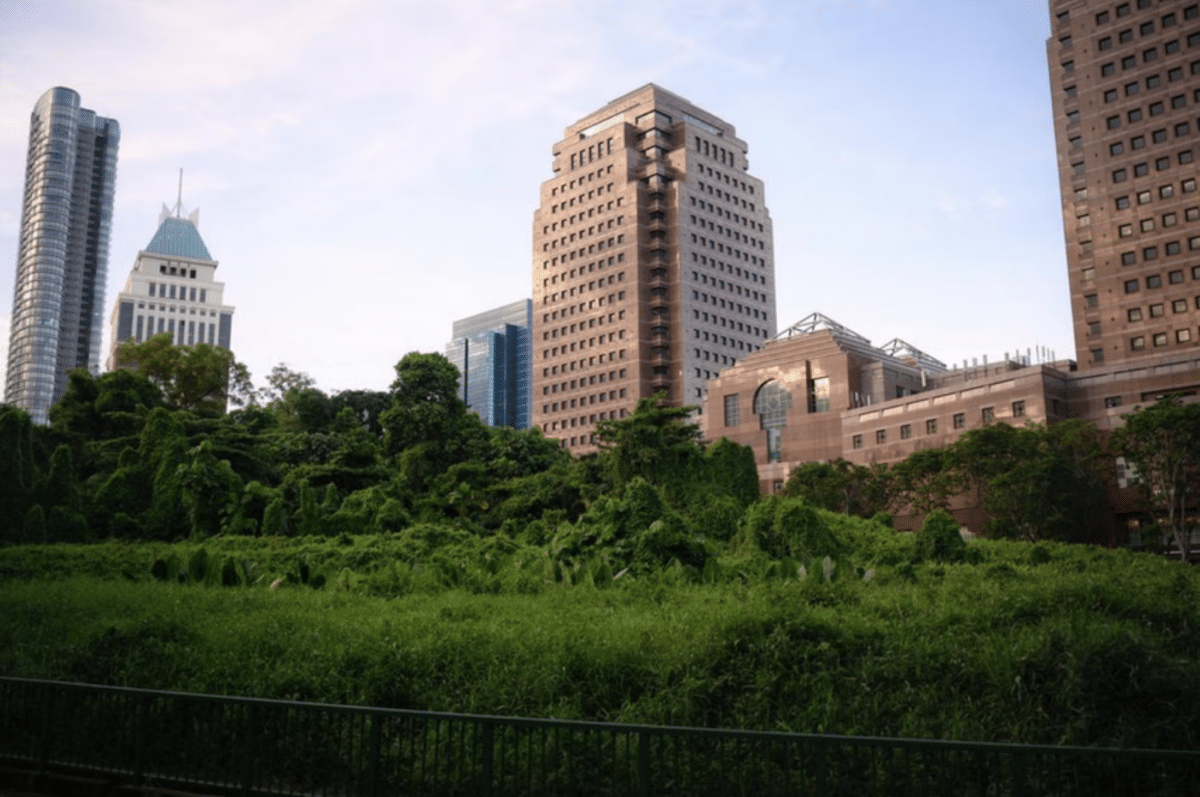
A forested plot of land sits between Orchard Boulevard and Ngee Ann Metropolis. The Straits Occasions/Asia Information Community
SINGAPORE – Excessive above the shiny malls of Singapore’s busiest buying belt, a pink-necked inexperienced pigeon spots a tree. It’s an acacia, a towering evergreen that stands proud of a dense cover the dimensions of three soccer fields.
A stone’s throw away on the pavement lining Orchard Highway, mynahs squabble for crumbs and buyers jostle for house within the overcrowded avenue.
However right here, within the overgrown no man’s land bordered by Orchard Flip, Orchard Boulevard and Orchard Hyperlink, there may be solely the transient fluttering of wings and swaying of branches.
It’s a curious house: a uncommon parcel of prime actual property, left untouched because the Nineteen Fifties, in a rustic the place liminal areas are sometimes pulverized by pragmatism.
It isn’t a park. Neither is it an energetic cemetery. There isn’t a one preventing for it, nobody utilizing it and, aside from the occasional discussion board submit asking “Why till now nonetheless no developments but?”, hardly anybody pays consideration to it.
Article continues after this commercial
Even the multimillion-dollar makeover meant to remodel Orchard Highway right into a lush inexperienced hall that connects Singapore’s historic inexperienced areas passes over this secondary forest, for which the City Redevelopment Authority (URA) has different plans.
Article continues after this commercial
Perplexed however intrigued, I do a preliminary Google search, however don’t get very far. A weblog submit right here, a throwaway point out in a decade-old article there.
I even contact the Ngee Ann Kongsi, which used to personal the plot of land, to ask if it might inform me something about its historical past, however am instructed by a pleasant however apologetic worker that there’s not a lot so as to add.
“In the event you discover out, please tell us too,” she says, placing an finish to our transient telephone name.
Nonetheless, I need to understand how this forest got here to be, why it stays untouched, what lies inside and what destiny awaits it.
That is the story of my journey down that specific rabbit gap and the way I find yourself within the lushest, most mosquito-ridden a part of Orchard Highway, squinting at a pink-necked inexperienced pigeon.
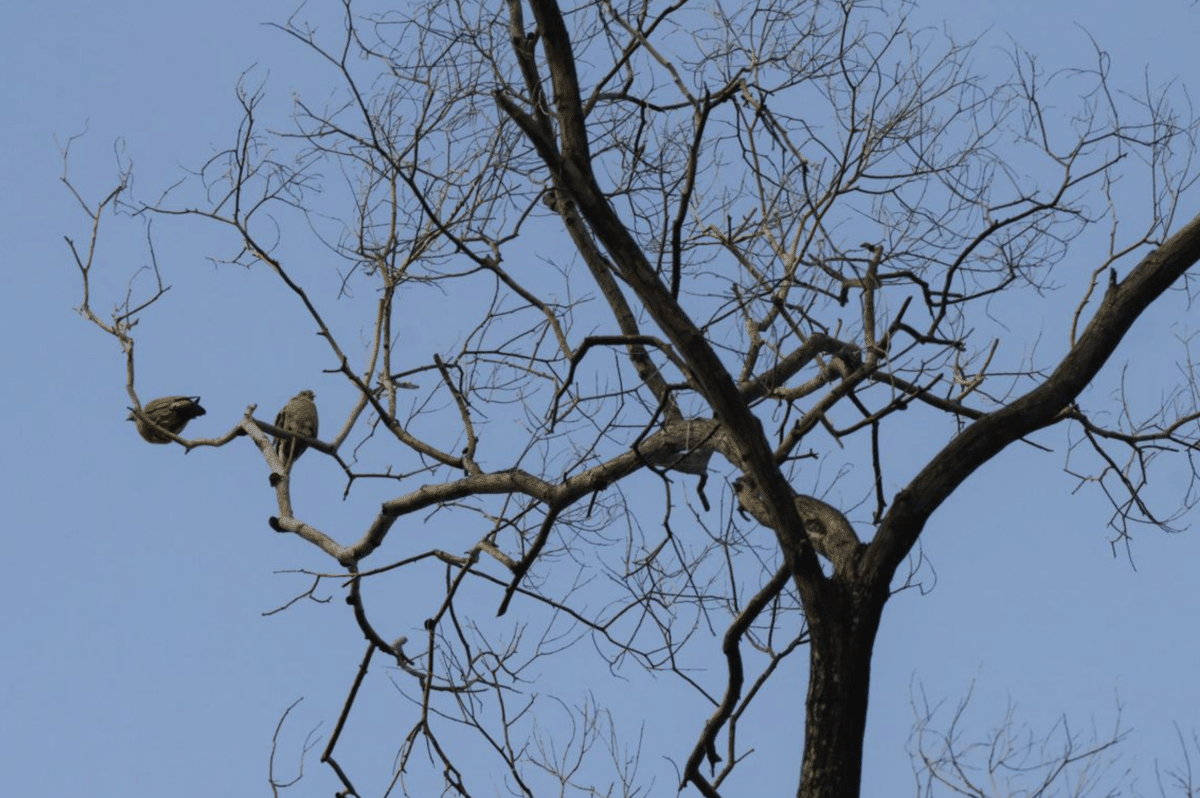
Pink-necked inexperienced pigeons perched on a department within the secondary forest outdoors Ngee Ann Metropolis. The Straits Occasions/Asia Information Community
Previous lives
Earlier than acacias sprouted up and creepers carpeted the bottom, this part of Orchard Highway was studded with tombstones.
A Teochew cemetery, Tai Shan Ting, sprawled over the expanse at the moment occupied by the forest, in addition to Ngee Ann Metropolis, Wisma Atria, Orchard Cineleisure and Mandarin Gallery.
The about 28ha plot of land was acquired from the East India Firm by Ngee Ann Kongsi in 1845, establishing Singapore’s first Teochew cemetery on the positioning. For the island’s Teochew group, this was a welcome – and lengthy overdue – transfer.
“Most of the early Teochew immigrants who settled in Singapore have been laborers who arrived alone to make a dwelling. They lived in poverty and had little hope of returning to China to spend their closing days,” says Dr Lee Chee Hiang, an affiliate professor within the Division of Chinese language Research on the Nationwide College of Singapore (NUS).
“For these immigrants, in search of a spot for burial after dying in a overseas land turned a urgent concern, as there have been only a few public cemeteries established by the colonial authorities of Singapore at the moment.”
Many cemeteries then have been owned by Christian or Muslim organizations, which made them inaccessible to Chinese language immigrants who weren’t Christian, Catholic or Muslim.
However, by 1948, Tai Shan Ting had ceased for use as a cemetery for a few years, in accordance with a Straits Finances report on a proposed scheme for constructing flats alongside its fringe.
By 1951, exhumation was below manner. Over the following two years, greater than 20,000 graves have been exhumed, their stays interned at one other Teochew cemetery in Sembawang.
Many remained unclaimed. Of 5,000 soon-to-be exhumed our bodies, solely 25 have been claimed by kinfolk for reburial, wrote The Straits Occasions in September 1951.
It quoted an official of the Kongsi, who defined that as a result of the graves have been so previous, tracing the descendants of the deceased turned a problem as a result of even the kinfolk had died.
“Throughout the late Ming and early Qing intervals in China, many Teochew individuals concerned in anti-Qing secret societies fled to Singapore to flee the Qing authorities persecution,” says Dr Lee.
“Unable to return residence, they have been buried in public cemeteries, however typically didn’t dare to engrave their names or residence cities on their gravestones. Consequently, some graves at Tai Shan Ting remained nameless, with nobody capable of establish or declare the stays.”
Making room for the dwelling
Ghosts lurking within the shadows, uncleared graves hidden within the vegetation. The forest’s macabre previous has given rise to all kinds of rumors, traded by staff working close by and concrete explorers passing by.
But the spooky tales – no matter their veracity – haven’t deterred builders from attempting to coax households into settling down within the former cemetery.
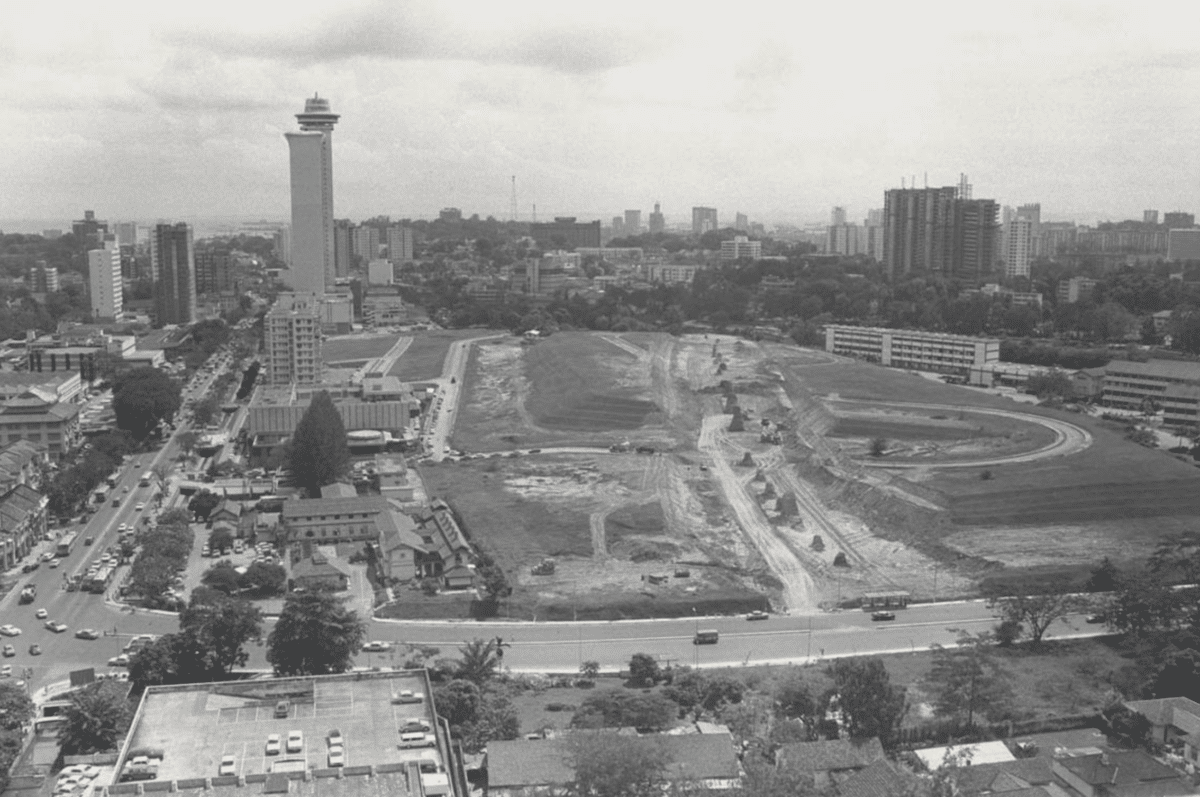
A 1972 photograph of the development of a brand new highway behind Ngee Ann Constructing by the previous Tai Shan Ting cemetery. The Straits Occasions/Asia Information Community
In 1952, the Kongsi’s plan was to show Tai Shan Ting right into a teeming residential property, residence to twenty bungalows, 84 shophouses and 423 flats. There was to be a lodge, a faculty, an amusement park, a cinema and {an electrical} substation.
As an alternative, the Kongsi ended up erecting Ngee Ann Constructing, a 10-storey growth housing flats and retailers, on a part of the land in 1957. It was later torn down for Ngee Ann Metropolis, which opened in 1993 to serve a industrial objective.
The encompassing 50,000 or so sq m of land was acquired by URA in late 1979.
Over 20,000 sq m – the place the forest now sits – stays undeveloped and is slated for residential use below the company’s Grasp Plan.
However the URA instructed The Straits Occasions in a joint assertion with the Nationwide Parks Board (NParks) that it has no fast plans to develop the positioning.
Mr Nicholas Mak, chief analysis officer at property search portal Mogul.sg, estimates the land on which the forest sits is value over a billion {dollars}, calling it a “massive treasure chest of gold” that the Authorities can proceed sitting on. Although it’s not raking in dividends, its worth will proceed to understand.
“The land sale market is a bit subdued. The Authorities is in no hurry to promote as a result of that is the final piece of greenfield growth land so near Orchard Highway.”
Plus, he provides, there isn’t a stress on the Authorities to behave on its plans for the realm. “Not like HDB, which faces excessive demand for brand spanking new flats, there isn’t a stress on this case to promote tremendous prime land to builders as a result of consumers aren’t precisely clamouring for tremendous prime land close to Orchard Highway.”
OrangeTee Group’s chief researcher and strategist Christine Solar concurs: “The Authorities is now concentrating on public housing, so I don’t assume this space is their precedence. The posh market is sluggish too.”
Nonetheless, when the forest is lastly became houses, Mr Mak believes that demand will sprout. “I don’t assume residence consumers listed below are bothered by whether or not the land is a former cemetery or not,” he says.
Take, for example, the Bidadari property, which was a cemetery and confronted no scarcity of bidders when its graves have been exhumed to make manner for a contemporary crop of Construct-To-Order flats. It was so oversubscribed that when it was launched in November 2015, there have been as many as 20 candidates competing for every five-room unit.
As Mr Mak places it: “It’s a case of ‘out of sight, out of thoughts’. If individuals don’t see the cemetery, they often don’t keep in mind there was one.”
Wasteland or treasure trove?
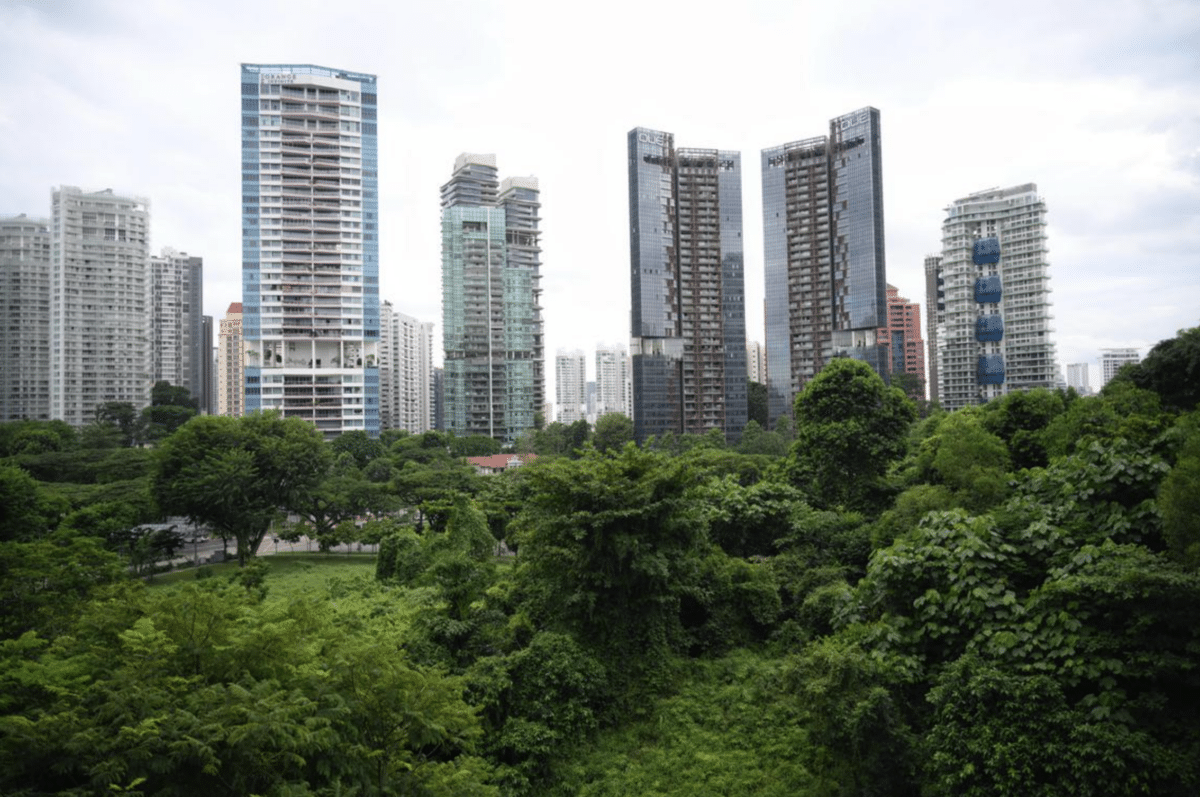
The forest is residence to many various species of crops. The Straits Occasions/Asia Information Community
The land possesses astronomical worth as a bit of actual property. However, in its present type, it’s tougher to quantify its value.
Inaccessible and elevated, there may be not a lot pedestrians can do with it. Singapore’s city explorers and grave hunters will not be terribly within the forest both. Of the seven I communicate to, just one has ventured inside.
Mr Hikari Azyure, 47, chief govt of the City Explorers of Singapore, says: “Primarily based on older information and obtainable knowledge within the Nationwide Archives of Singapore, the chance of uncovering something vital, significantly on high of the hill, seems very slim.”
Mr Charles Goh, a regional security supervisor in a building agency who locates misplaced graves along with his brother Raymond in his spare time, additionally left disillusioned after a trek into the forest within the early 2000s.
The 56-year-old, who beforehand tracked down Ngee Ann Kongsi founder Seah Eu Chin’s grave in 2012, had heard discuss of tombs buried within the undergrowth there. However all he discovered have been small saplings, drain traces and a few scaffolding materials.
This former graveyard doesn’t fairly spark the identical frisson of historic intrigue as Bukit Brown Cemetery, with its dense community of tombs and small however steadfast group of guardians.
However that doesn’t imply it’s devoid of significance.
Dr Lee says: “Tai Shan Ting, the most important Teochew public cemetery, held significance past merely offering a burial place.
“It was the primary public cemetery funded by Teochew group leaders, symbolizing the spirit of mutual help and unity amongst Teochew individuals and highlighting the cohesion of the Teochew group.”
Although the land itself, now cleared of graves, not supplies as clear a window into the previous, Mr Fauzy Ismail, president of the Singapore Heritage Society, believes that it stays essential as a result of “it highlights how sure parcels of land that we aren’t accustomed to have been used for various features”.
Even with out the tombs, I’m nonetheless curious. I need to know what lies inside, and it quickly turns into clear that there’s just one method to discover out.
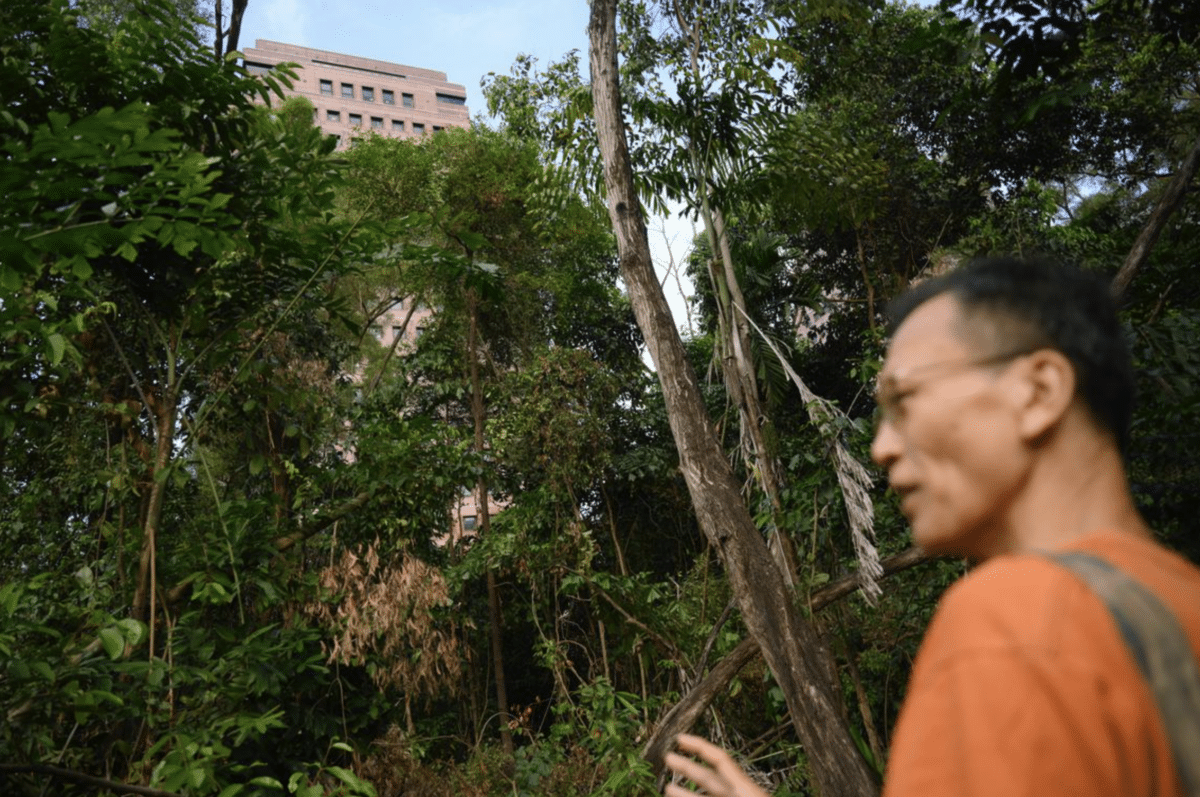
Ecologist Shawn Lum mentioning the several types of bushes that sprouted up independently within the forest. The Straits Occasions/Asia Information Community
Along with Dr Shawn Lum, a senior lecturer at Nanyang Technological College’s (NTU) Asian Faculty of the Atmosphere, I make my method to city on a Monday afternoon.
We scramble up a steep mound of earth alongside Orchard Boulevard and stand beneath a patchy cover, marveling on the ecosystem that has flourished right here with minimal upkeep.
Towering above us are acacias, hardy bushes that may develop on nutrient-poor soils like this one.
“You possibly can see that the bottom under is leveled,” Dr Lum says, pointing on the soil beneath our ft. “While you take away the highest layer of soil the place all of the vitamins are, you’re left with all of the clay stuff under.”
There are sea apples with moss on them – which hints at first rate air high quality – and kelat jambu saplings that recommend the forest is present process a secondary section of progress.
Overhead, I spot a few pink-necked inexperienced pigeons roosting within the branches of a tree. The presence of those park-dwelling birds is an efficient indicator that the surroundings presents sanctuary, notes Dr Lum.
For him, that is the right instance of the resilience of nature. “You give it an opportunity and it’ll come again. Even with out anyone attempting – the animals simply dropped the seeds right here – there’s this forest sprouting up in the midst of the busiest buying district on the island. It’s fairly wonderful.”
Billion-dollar query
Although the forest has been zoned for residential use, URA and NParks say they’ll “overview the plans for the positioning considering evolving wants and calls for in addition to current choices within the metropolis centre”.
Within the meantime, ecologists like Dr Lum are free to dream.
“You don’t have a forest in the midst of Ginza or the Champs-Elysees, however we’ve one proper right here in Orchard Highway. Leaving the forest right here could be radical, nevertheless it simply could be loopy sufficient to work,” he says.
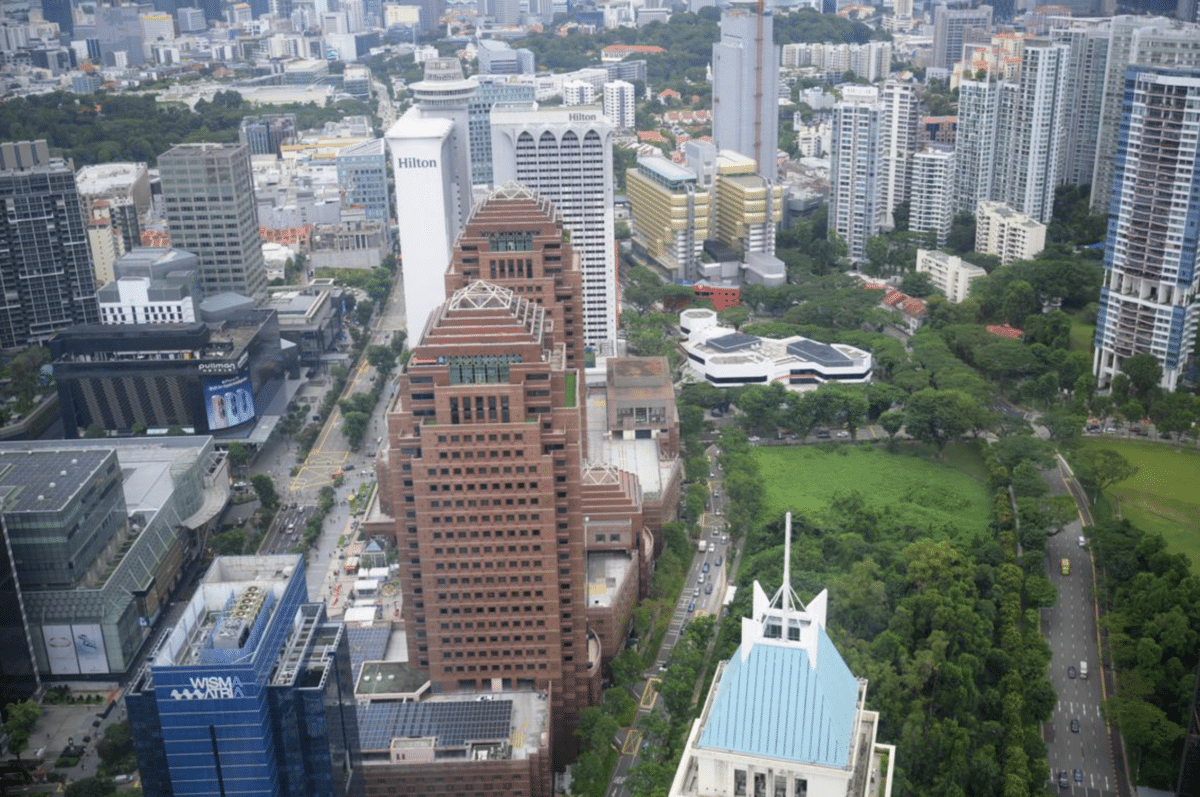
The forest has been zoned for residential use, however some hope it could be became a park. The Straits Occasions/Asia Information Community
However to justify the expense and the lack of income, he provides that it must be a spot liked, used and wanted by the final populace.
Maybe it could possibly be made extra accessible with raised boardwalks and different modifications, or became a park, because the Orchard Highway Enterprise Affiliation (Orba) hopes.
“We might love for it to be some type of public house. It could make an important park the place individuals might hang around. As a result of it’s proper on the coronary heart of Orchard Highway, it’s fairly effectively located for one thing like that,” says Mr Mark Shaw, 55, Orba’s chairman.
A park like that would host music occasions and different way of life choices that assist increase the vibrancy of the district, he provides hopefully.
Moreover, preserving inexperienced areas like this one might assist fight the city warmth island impact, says Dr Perrine Hamel, Assistant Professor at NTU’s Asian Faculty of the Atmosphere.
“Patches of forests are the simplest at lowering temperatures, particularly once they attain a sure measurement,” she notes, including that in addition they stop flooding by absorbing rainwater.
For Dr Lum, the forest’s significance extends past its sensible use. He sees it as a press release of hope amid mounting eco-anxiety and disappearing secondary forests.
“Younger individuals as of late appear to be experiencing emotions of despair and anger over the way forward for our planet. However are there issues we will do, methods we will protect our bodily surroundings, to indicate that we will heal this earth?”
Dr Veera Sekaran, a professor at NUS’ Division of Organic Sciences, in the meantime, cautions towards untimely tree-hugging.
“We shouldn’t rush in and say we have to defend this plot of land. There’s this stability that must be obtained when it comes to the influence and worth of that specific spot, in addition to its biodiversity.”
Even when the land is ultimately became a residential growth, he means that elements of the greenery be retained as micro forests throughout the new property in order that there’ll nonetheless be some respite from the city warmth.
No matter it turns into, its transformation might not drastically have an effect on the expertise of buying in Orchard Highway.
In spite of everything, the addition of some hundred residents is unlikely to considerably have an effect on footfall or make the streets really feel extra crowded. Apart from, what’s yet one more high-rise constructing in a steel-clad concrete jungle?
For now, although, the forest bides its time – missed by most, save for the birds.
- Down The Rabbit Gap is a collection during which reporters at The Straits Occasions chase down solutions to area of interest questions and observe the place their curiosity leads them.
- Cherie Lok covers meals and tradition for The Straits Occasions. She often writes e book opinions too.


